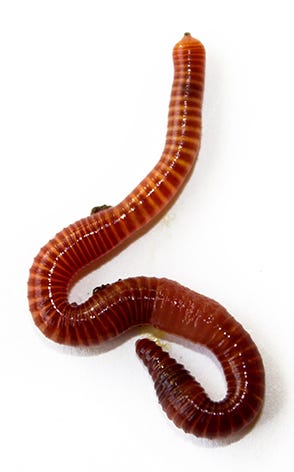Getting My Red Wiggler Express To Work
Getting My Red Wiggler Express To Work
Table of ContentsThe Main Principles Of Red Wiggler Express The 10-Second Trick For Red Wiggler ExpressWhat Does Red Wiggler Express Mean?The 7-Second Trick For Red Wiggler ExpressThe Main Principles Of Red Wiggler Express
And the flourishing Red Worm populace? Also in the heap that was set up directly in front of yard composters with existing Red Worm colonies.
Lots of selections, including Red Wigglers, European Nightcrawlers, and Lumbricus types were brought over from the European continent. Yet below's the thingNative or otherwise - and as talented as they are at being able to survive in a wide-range of atmospheres and problems -. In other words, they are even more most likely to hang around in any kind of energetic composting systems you have set up, than they are to stroll off and begin messing up the atmosphere.
Origins need oxygen for respiration and rely upon smooth air movement within the dirt to prosper. When it rainfalls, soil can become saturated with water, minimizing the oxygen readily available and impeding vitamins and mineral absorption. To maintain an optimum equilibrium, the soil should enable water to drain pipes appropriately, leaving adequate space for air to support origin health and wellness
The 20-Second Trick For Red Wiggler Express

When it concerns worms for composting, what enters your mind? If you were an earthworm breeder, dealer, or simple garden enthusiast, then you 'd recognize that red wiggler worms are the suitable worms for vermicomposting. To discover more regarding these earth marvels, gone through some of the red worm truths below.
(https://nicedir.net/details.php?id=344854)If they stretch their bodies, you'll be able to see the stripes on their skin. When elevating worms such as red wiggler worms, you need to be able to know exactly how to make excellent usage of them. When you're able to keep and care for their habitat well, and additionally feed them the ideal kinds of natural wastes, then they'll be able to generate nutrient-packed and quality-rich worm castings for you (also known as worm poop or garden compost).
The Best Guide To Red Wiggler Express
What do worms consume? Well, these red wriggler worms can be fed with kitchen area scraps and yard wastes. Any worn out organic things will certainly do like vegetable and fruit peels, crushed egg shells, utilized tea bags, coffee premises, grass cuttings, dry leaves, and others. Make sure not to feed them foods items that are oily, citrusy, or has meat or dairy in them.

This habits makes them fit for life in worm bins, compost heap, and other confined areas where natural waste is bountiful. Creating an optimum setting for red wigglers calls for a thoughtful approach. Consider the complying with essential elements to look after red wigglers in the house and guarantee their health: Make use of a bedding of shredded newspaper or cardboard.

Add a handful of dry, shredded newspaper if the container becomes also damp. They do! Red wiggler worms recreate by laying tiny, lemon-shaped eggs in safety cocoons. These cocoons are generally deposited in the bed linens and hatch right into child worms within a few weeks. The fast recreation cycle of red wigglers is one of the reasons they are preferred for vermicomposting.
All about Red Wiggler Express
Their adaptability and strength have made them a preferred choice for vermicomposting in various regions around the world. Yes! They can endure from a range of 32F to 90F. They are super adaptable pests. Think about protective procedures for very severe temperature levels such as: Protecting the worm container with layers of straw or leaves.

Just bear in mind - you can constantly include more food later (but it's tough to eliminate feed once it's been added to a container!).
Due to the fact that I fed the red wigglers and compost worms way too much, they weren't able to maintain and in time the older food went uneaten and created anaerobic conditions that eliminated the worms. Fortunately is that there are really simple activities you can require to ensure this does not occur! Here're the 6 golden guidelines for how typically and just how much to feed your worms: Rule # 1: Small amounts! You can always include even more food later on.
All about Red Wiggler Express
Uneaten food will certainly result in anaerobic problems that will eliminate your live worms. It is okay to spray a little of their original bedding (which ought to already be in the container) over the food, however the food should never be buried and must be noticeable to your eye. Guideline # 5: See policy # 1! Rule # 6: After the initial feeding, feed the worms 1/3 to 1/2 of their weight.